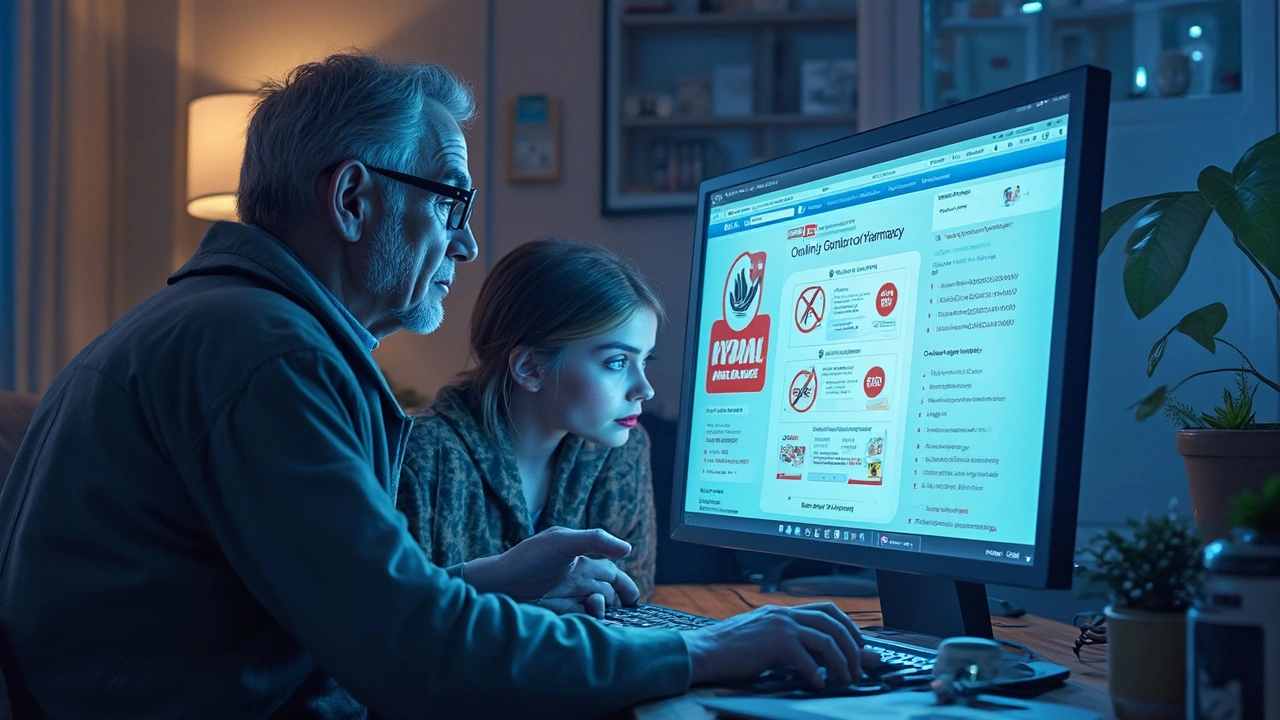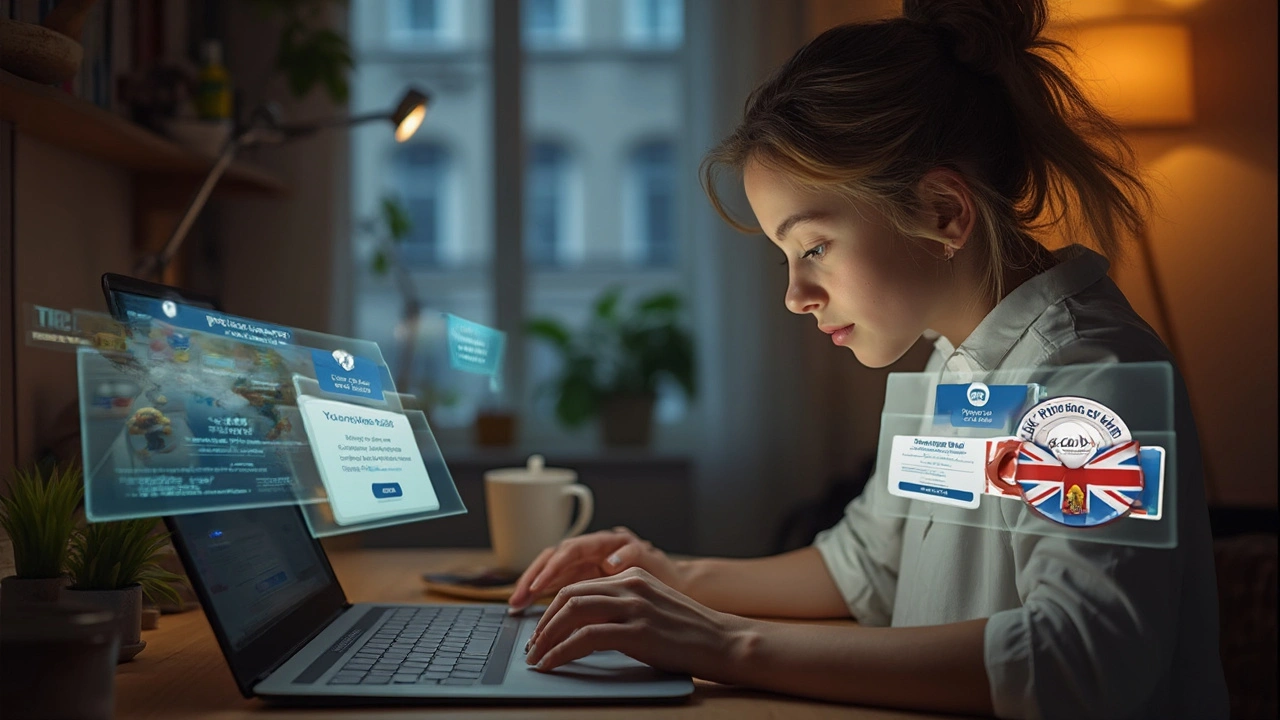Why the Rise of Fake Online Pharmacies Should Scare You (and How to Dodge Them)
If you’re hunting for cheaper prescriptions or just want the convenience of doorstep delivery, chances are you’ve thought of using an online pharmacy. Problem is, not every pharmacy on the web is legit. The National Association of Boards of Pharmacy (NABP) says an eye-popping 95% of sites selling prescriptions online operate illegally—or at least don’t follow US pharmacy laws. That’s not just sketchy. It’s dangerous. Some fakes sell counterfeit pills laced with the wrong dose, zero active ingredient, or worse, harmful chemicals. The black market for fake meds has exploded, leaving patients exposed to health risks, credit card theft, and identity fraud. Today, I’ll show you the seven most obvious red flags so you avoid being a cautionary tale. It’s not as tricky as you think. You don’t need to be a cyber detective, just someone who knows where to poke and prod before trusting a website with your health.
Checking Pharmacy Certificates: What Real Pharmacies Display (and Fakes Copy Poorly)
Legit online pharmacies don’t just say they have a license—they show it. In the US, look for the VIPPS seal (Verified Internet Pharmacy Practice Sites), which is awarded by the NABP. In Canada, keep an eye out for the CIPA (Canadian International Pharmacy Association) badge. These seals prove you’re dealing with a pharmacy that’s been vetted and meets strict standards. But here’s the catch: fake pharmacies love to slap these logos on their sites. They count on you not to double-check. The trick is to click the badge itself. On a real site, the seal links back to the official verifying body, showing the pharmacy’s unique credentials. If clicking the badge leads to nowhere—or only reloads the same page—it’s likely a forgery. If you’re not sure, head straight to the official NABP or CIPA website and search the company’s name in their database. Cross-checking is simple and takes less than a minute.
A real online pharmacy will also display the business’s registration number and sometimes a pharmacist’s name with license details. Shady operations often hide these or use obviously generic placeholders. If you see a certificate with an expiration date from years ago or weird typographical errors, that’s another massive warning sign. The real deal looks professional because it has to endure official inspection. For European users, the common “EU common logo” signals a pharmacy meets EU requirements. It pays to know what your country’s regulators require, so double-check your local guidelines before placing any order.
How to Analyze a Pharmacy's Domain Age: Fresh Domains Are a Red Flag
You’d be amazed at how many scam pharmacy websites are brand new—sometimes just a few days or weeks old. Criminals toss up hundreds of these sites, milk them for money, and then pull them down once people catch on. A legit pharmacy has nothing to hide and will often have a steady web presence dating back several years. Want to check a pharmacy’s age? Use free tools like WHOIS Lookup, DomainTools, or ICANN’s search. Plug in the domain name, and you’ll see when it was registered. When you spot a site that claims to be “trusted for decades” but the domain was created last month, you’re staring at a blazing red flag.
What’s a safe domain age? There’s no magic number, but sites older than two years are much less likely to be fly-by-night scams. You can even check the Internet Archive’s Wayback Machine to see what the site looked like in the past. Legitimate pharmacies show a slow and steady build-up of content and trust signals, whereas fakes recycle cloned pages with little substance. Watch out for copycat domains, too—adding an extra letter or using a similar-looking URL to a famous pharmacy. That’s phishing, plain and simple. Authentic businesses guard their digital reputation. Scammers never plan long-term, which is why their domains look brand new, change hands often, and sometimes use weird country codes to avoid takedowns.

Testing Customer Support: Real People or Automated Bots?
If you ever sense something off on a pharmacy’s customer support, follow your gut. Real online pharmacies want you to trust them, so you’ll get clear channels to reach out: phone numbers, live chat, and proper email support. Try them out. Ask for the pharmacy’s license number and physical location. See if the agent gives specific answers or falls back on generic responses. A legit operator shouldn’t hesitate to provide details or direct you to the official licenses page. Fake pharmacies use scripted bots or offshored agents reading from a prompt. Ask about specific medications (like if they require a prescription), and see if you get a straight answer or an evasive one. Red flag: if they claim no prescription needed for strong drugs like antibiotics or sleep medications. Not only is that illegal, it’s a popular scam move. A proper pharmacy always asks for your prescription and sometimes even contacts your doctor to verify.
Email responses from authentic pharmacies are prompt, professional, and have a signature including staff name, role, and contact info. Scam sites reply with short, often poorly written messages or don’t reply at all. Sometimes you’ll spot a suspicious Gmail or Yahoo address instead of a company domain—bad sign. The time to reply matters too; established businesses have regular hours and short turnaround, while scammers may take days or answer only at odd hours. If you find a contact page that only offers a web form, or you never get a response at all, don’t risk it. A quick phone call helps a lot. If no one ever answers, or it feels like you’re speaking to a call center that is obviously not a pharmacy, walk away.
The Anatomy of a Scam: 7 Red Flags That Scream 'Fake Pharmacy'
So what are the most obvious red flags that pop up on these shady websites?
- Lack of Verified Licensing: They make licensing claims but don’t show up in official databases.
- Too-Good-To-Be-True Prices: Medications sold at a fraction of the normal cost—sometimes pennies on the dollar. No real pharmacy can undercut market prices like that.
- No Prescription Required: A massive warning sign. Any site offering powerful prescription meds without a doctor’s script wants your money, not your well-being.
- Suspicious Payment Methods: Bitcoin or gift cards as the only payment options? Walk away. Legit businesses use regular credit cards and standard gateways.
- Unsecure Website: No https? That’s a deal breaker. Secure sites always start with “https” and show a padlock symbol next to the URL.
- Missing (or Fake) Contact Info: Reputable pharmacies post real addresses and working contact details. If everything leads to a dead end or the info seems lifted from somewhere else, move on.
- Poor Attention to Detail: Grammar mistakes, weird product photos, and low-res seals or certificates signal a rush job. Real pharmacies invest in building trust and looking professional from the get-go.
If you want to compare and explore legitimate, well-reviewed alternatives, check out this reliable list of pharmacy alternatives for peace of mind. These sites have been vetted for service, quality, and real customer experience. Remember, if too many red flags show up on a single site, it’s best to step away and report the page to your local regulator.
Practical Tips: Protecting Yourself from Online Pharmacy Scams
Here’s how you can stay one step ahead of scammers every time you shop for medicine online:
- Always start with official pharmacy lists. The NABP has a “Safe Pharmacy” tool, and the FDA keeps an up-to-date list of warning letters issued to shady pharmacies. Stick with names you find there.
- Check domain age and company history. Free WHOIS tools or the Wayback Machine reveal a ton about a pharmacy’s reputation and how long they’ve existed.
- Always require a prescription. If a site tries to sell you prescription-only meds without any kind of check, it’s a scam, or at minimum they don’t care about your health.
- Don’t be tricked by rock-bottom prices. A legitimate business can offer discounts, but never prices that sound like a mistake. Cross-check with your local pharmacy’s prices or other trusted online pharmacies.
- Check for secure payment options and website security. Only enter payment info on websites with https, and always report sites that ask for payment by gift card or cryptocurrency only.
- Verify contact info and customer support firsthand. Call or email before making any purchase, and notice the quality and speed of responses.
- Double-check certificates and badges. Click on seals to see if they link to genuine verifying organizations. If you’re unsure, look up the pharmacy’s license on the regulator’s official site.
According to a 2024 survey by LegitScript, nearly 10% of online pharmacy shoppers fell victim to scams by choosing pharmacies based solely on price and accessibility. With so many legitimate options vetted by regulators, there’s no reason to risk your health or identity.
Online shopping for medications can be easy and safe if you keep your eyes open for these red flags and don’t let urgency override common sense. Double-check, ask questions, and don’t let the promise of bargain prices cloud your judgment. A few minutes of research now can save you tons of headaches—and maybe more—down the line. Stay smart and take control of your health from your screen.


Post A Comment